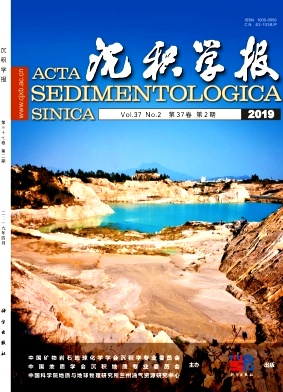Integrated Sequence Stratigraphic Division and Vertical Distribution Characteristics of Marine Shale: A case study of the Wufeng Formation-Longmaxi Formation in southeastern Sichuan Basin
doi: 10.14027/j.issn.1000-0550.2018.162
- Received Date: 2018-06-06
- Rev Recd Date: 2018-08-15
- Publish Date: 2019-04-10
-
Key words:
- marine shale /
- Wufeng Formation-Longmaxi Formation /
- sequence stratigraphy /
- sequence interface identification /
- evolution model
Abstract: In order to explore the identification of the sequence boundary, sequence division, and vertical evolution characteristics of marine shales, and to provide a reference for the study of standardized sequence stratigraphy in shale, as well as the exploration and development of shale gas, we take the Wufeng Formation-Longmaxi Formation marine black shale, which has rich organic matter in southeastern Sichuan Basin, as an example, The comprehensive utilization of the wild section, rock cores and petrographic thin sections, palaeontology graptolites, logging, and geochemical data is carried out. Based on sequence stratigraphy, the marine shale sequence interface recognition and the sequence of the division are investigated. The study established a sequence boundary recognition method for Marine shales with a lithologic interface to reflect the physical characteristics intuitively, with logging to reflect stratigraphic superposition patterns with the concept of limited time of paleograptolite and using geochemical parameter TH/U to the reflect sedimentary environment, where total organic carbon (TOC), TH, U, and K reflect the stratigraphic rotation. Then, the vertical sequence development characteristics and the sequence characteristics of the connecting well are analyzed, and it is clear that the Wufeng Formation-the first section of the Longmaxi Formation experienced three large-scale transgressive-regressive cycles, and three tertiary sequences and seven system tracts are divided. This paper discusses the control effect of the recession-transgression events and glacial climate on relative sea level. In the end, the sequence evolution model of marine transgression is proposed, which is influenced by glacial climate, tectonic uplift, rising ocean currents, and turbidity currents. These system tracts SQ1-TST, SQ2-TST, and SQ2-EHST are the key layers of organic matter enrichment, and SQ3-TST is the secondary organic matter enrichment stratum.
| Citation: | WANG GuanPing, ZHU Tong, WANG HongLiang, WU Jing, DU Wei, FENG DongJun, WANG RuYue. Integrated Sequence Stratigraphic Division and Vertical Distribution Characteristics of Marine Shale: A case study of the Wufeng Formation-Longmaxi Formation in southeastern Sichuan Basin[J]. Acta Sedimentologica Sinica, 2019, 37(2): 330-344. doi: 10.14027/j.issn.1000-0550.2018.162 |






 DownLoad:
DownLoad: